Lifetime Achievement Awards
The Lifetime Achievement Award was conceived to honor particularly noteworthy contributions to the advancement of the discipline and/or Society over a career of service in precision engineering.

Lifetime Achievement Award
Dr. Peter J. de Groot
Dr. Peter de Groot is recognized for his deep expertise in optics and interference fringes, evidenced by his significant contributions to research, development, and education within the optics, physics, and precision engineering communities. With a remarkable career spanning over fifty years, beginning with hands-on experience in building a reflecting telescope and advancing through experimental Physics, Dr. de Groot has consistently demonstrated his passion for discovering the underlying principles of science and engineering. His prolific contributions, including 140 US patents and over 200 technical publications, tutorials, and book chapters, underscore his innovative impact on optical instrumentation. His esteemed positions as a Fellow of SPIE, Optica, the Institute of Physics, and the International Academy of Engineering and Technology, along with his role as the 2024 President-Elect of SPIE, highlight his leadership and dedication to the field. His experience as an instructor for tutorials, a keynote speaker within the precision engineering community, and as an honorary professor further showcases his ability to educate and inspire the next generation of scientists and engineers. Given his exceptional qualifications and visionary outlook, Dr. de Groot is an invaluable asset to any organization or institution aiming to advance optical science and precision technology.
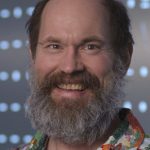
Professor Alexander H. Slocum
2023 Lifetime Achievement Award
Professor Alexander Slocum is recognized for a career in applying precision engineering principles to generate higher performance at lower cost in a wide range of applications. His work in semiconductor lithography, machine tools and manufacturing equipment, medical devices and energy production have yielded over seven dozen patents, numerous design awards, and critical industry standards. Prof. Slocum is a strong advocate for education through his publications, online lectures and notes, classes and tutorials. Many have received their first introduction to precision engineering techniques through his Precision Machine Design textbook. He was awarded a Department of Commerce Bronze Medal for Federal Service, the Martin Luther King Jr. Leadership Award, the ASME Leonardo da Vinci Award and ASME Machine Design Award, the Massachusetts Professor of the Year in 1999 – among many, many other honors and awards. Professor Slocum was a part of the Department of Energy’s BP Gulf Oil Spill response team and served as the Assistant Director for Advanced Manufacturing in the Executive Office of the White House. Professor Slocum’s lasting contributions include the molding of generations of masters and doctoral students at the Massachusetts Institute of Technology where he is presently the Walter M. May (1939) and A. Hazel May Chair in Emerging Technologies. Professor Slocum was the 108th person to join ASPE in March of 1987. He has served on the ASPE Board, on numerous ASPE Meeting committees and has been a long-time tutor for the ASPE Tutorial Program
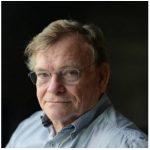
Piet C. J. van Rens
2022 Lifetime Achievement Award
Piet C.J. van Rens received a M.Sc. degree in Mechanical Engineering in 1980 from the Technical University in Eindhoven. He studied mechanical engineering with Prof. Ir. Wim van der Hoek and was for several years his assistant at Philips CFT. During this time he worked at the Laboratory of Space Research in Utrecht for 3 years, and then for 24 years at Philips. Piet has had a long history in the practice of precision engineering working at the highest levels of precision in applications such as lithography and electron microscopy. He has also taught many generations of precision engineers both formally and informally, including six years at the Technical University in Delft on a part-time basis for six years, alongside 30 years of teaching for the Mikrocentrum in Eindhoven. More recently, for the last ten years Piet has been a practicing independent engineer, predominantly working for Settels Savenije Group of Companies and their customers such as ASML, in all manner of high precision technology applications. Piet’s contributions stretch back over four decades with contributions to The Devil’s Printbook (desDuivels Prentenboek), one of the foundational books in Dutch precision engineering. Piet is one of the pillars of the Dutch precision engineering community and an extremely gifted practitioner of the art of precision engineering. His contributions can be found in many current ultra-high precision machines in use today.
Piet has had a long history with ASPE where he has imparted much of his hard earned knowledge and experience through extremely well-received tutorials in the ASPE tutorial program.
Prof. Jan van Eijk
2021 Lifetime Achievement Award
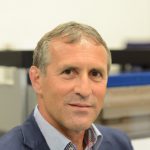
Prof.Dr. Jan van Eijk is awarded the ASPE Lifetime Achievement Award for broad-reaching advances in precision mechatronics and for promoting the active sharing of these advances throughout the technical community.
Jan van Eijk accepts the ASPE Lifetime Achievement Award as a representative of the Dutch community in precision engineering.
As a pillar of this community, he has contributed by initiating and heading innovative applied research activities and through active sharing of industrial expertise. This collaborative spirit was first realized in 1989 with the creation of an in-house mechatronics training program for Philips engineers where industrial trainers taught new engineers how to work in multi-disciplinary teams and to employ each other’s technical strengths in order to reach the best overall result. This course has by now educated some 2500 engineers and established a solid foundation as other training programs were created to cover the additional disciplines. Beginning in 2010, these training activities were continued outside of the Philips organization by the establishment of the “Mechatronic Academy.”
He started his education at the Delft University of Technology with a MSc degree in Mechanical Engineering. Following this, he spent three years abroad working at universities in Pakistan and Sri Lanka as a UNESCO associate before returning to Delft to complete a doctoral program that included a dissertation on the design of flexure mechanisms. He received a Ph.D. in Mechanical Engineering in 1985.
Prof.Dr. van Eijk then worked for twenty-two years at the Philips company in their Centre For Industrial Technology (CFT). The Philips company, based in the Netherlands, has been a birthplace of advances in science and technology since the early years of the twentieth century. This Centre formed the knowledge base for mass production technology in Philips. Research done in the “Natlab” was famous and the development of high-throughput manufacturing machines proved to be an important factor in the decades-long growth of the organization. Throughout his career, Jan van Eijk has had the opportunity to build on this foundation and to work with many excellent engineers in the field of high precision mechatronics.
His unique skills and expertise have arisen from the knowledge and experience gained from working at Philips where he became Chief Technical Officer of Mechatronics. While building a mechatronic technology center of about 200 engineers, he made conceptual contributions to a wide range of applications, including optical disc drive systems and lithography systems. With the start of ASML in 1985, Dr. van Eijk contributed to key concepts and to the architecture of mechatronic elements of ASML’s highly successful lithography tools. The use of a rigorous metrology concept, introduced in 1986, formed a significant contribution to the early lithography machines.
After leaving Philips in 2007 he founded his own company, Mechatronic Innovation and Concept Engineering (MICE), to continue to provide consultancy to world-class equipment manufacturers world-wide. He advises not only on technical concepts and designs for systems, but also on how to develop key components necessary for the successful growth of advanced technology organizations.
His skill in explaining sophisticated concepts in a very accessible way was further heightened by teaching for twelve years as a part-time professor at the Delft University of Technology from 2000 through 2012. There he supervised doctoral students on projects related to using active magnetic bearings for precision applications.
Jan van Eijk served on the council of euspen and the board of directors of ASPE for several years. In 2012 he was awarded the euspen Lifetime Achievement Award, and in 2016 the DSPE awarded him the Martin van den Brink award for his leading role in the architecting of high-technology systems.
John S. Taylor
2020 Lifetime Achievement Award
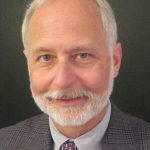
Dr. John S. Taylor is an Adjunct Professor at the Center for Precision Metrology at the University of North Carolina at Charlotte. After 33 years in varied roles in precision engineering, he retired from Lawrence Livermore National Laboratory in 2017 as Group Leader for Precision Systems and Manufacturing. He received his MS and PhD degrees in Mechanical Engineering from Purdue University.
John joined LLNL in 1984 to support the Large Optics Diamond Turning Machine, exploring diamond machinability and tool wear. John served as Optics Group Leader and Program Leader for LLNL’s EUV Lithography Program (partnered with Sandia and LBNL), which demonstrated the first EUV scanner for the EUV LLC consortium of chip makers. The EUVL Optics Group designed and constructed the world’s first diffraction-limited wide-field EUV lithographic camera, thus establishing the feasibility of lithographic-quality imaging using soft x-rays. The series of four lithographic cameras that were fielded for the Engineering Test Stand and the Micro-Exposure Tool constituted the most accurate optical systems constructed to date (2003), as demonstrated by rigorous measurements of the aligned system wavefront errors at a wavelength of 13.4 nm. Precision engineering principles were essential in guiding the system error budget, which spanned optical design, polishing, coating, mechanical structure, fixturing, assembly, alignment, and full spectrum figure and finish metrology. The most enjoyable aspect of this work was the day-to-day collaboration with world-class engineers and scientists from three national laboratories, chip makers, and industry.
John greatly enjoyed the variety of positions he assumed at LLNL and the breadth and depth of his colleagues. His work in the Chip Science Group on machinability and diamond tool wear on electroless nickel and silicon brought a deterministic understanding to previously non-repeatable processes. He gained hands-on experience with pitch polishing and metrology of Wolter optics for an EUV satellite, which highlighted the synergy of combining optics polishing with CNC machine tools. He led initial production analyses of the optics for the National Ignition Facility, which gave him a keen appreciation of the global optics companies. He served as chief engineer for NIF target fabrication during the transition from the previous craftsman approach to a metrology-intensive deterministic production process. During the Laboratory’s technology-transfer era, John led industrial projects to improve the determinism of polishing aspheric lithographic optics and on commercializing CNC grinding of optics. With broader rewarding impact, John lead several task forces and review committees to resolve production and quality control issues for LLNL projects. In recent years, John has lectured and mentored students at UNCC, DTU, TU/e, and other institutions, and continues to support ASPE topical meetings.
John is an enthusiastic charter member of ASPE and served as President (2014) and Director-at-Large. As President, he initiated the Technical Leadership Committees and the series of topical meetings on additive manufacturing, which began a partnership with euspen. Among his most enjoyable professional experiences, John co-chaired many ASPE Topical Meetings: Achieving Precision in Additive Manufacturing (2014-present, with Richard Leach), Precision Engineering and Mechatronics Supporting the Semiconductor Industry (2012 with Jan van Eijk), Precision Mechanical Design and Mechatronics for Sub-50nm Semiconductor Equipment (2008 with Jan van Eijk), and Metal Platings for Precision Finishing Operations (1991 with Chris Evans). John chaired the 2016 ASPE Annual Meeting in Portland and received the 2016 ASPE Distinguished Service Award. John has six patents, presented numerous technical papers, and is a member of euspen, ASME, ASTM F-42, OSA, SME, and is a Fellow of SPIE.
Stephen J. Botos
2019 Lifetime Achievement Award
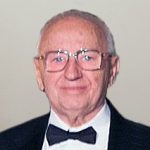
The Lifetime Achievement Award was conceived to honor particularly noteworthy contributions to the advancement of the discipline and/or Society over a career of service in precision engineering, and this year, ASPE is pleased to present this very special award to Stephen J. Botos for leadership in advancements in the field of intraocular lens manufacturing.
Stephen J. Botos, trained as a tool and die maker, left his native Hungary after the 1956 revolution and subsequent Russian occupation. After settling in the U.S. and serving two years in the U.S. military, Stephen did his first design work with Goerz Optical Co., in Pittsburgh, while at the same time attending night courses in Mechanical Engineering at the University of Pittsburgh. Among the products he worked on were sophisticated inertial guidance test systems for the aerospace industry. Soon after receiving his mechanical engineering degree in 1969, he and two of his engineer friends pooled their resources to form Aerotech, Inc.
Beginning with Stephen’s first patent and subsequent introduction of a manual optical mount which allowed for both extremely high resolution and large range of motion, Aerotech grew rapidly in the 1970’s.
Manual positioners were soon followed by the company’s first lines of electronic controls and motorized positioners. These products saw increasing demand and broadening applications in both the R&D market and commercial use in manufacturing and testing.
International expansion began in the 1980’s with Aerotech establishing subsidiaries in the United Kingdom and Germany. During this period, the company’s technologies found increasing use in a broadening range of industries including: medical devices, semiconductor and electronics, data storage, and laser processing among others.
During the 1990’s and early 2000’s, Stephen guided Aerotech’s efforts to address the rapidly expanding semiconductor and telecom industries by heading development of the company’s air bearing and linear-motor-based product technologies in order to address these market’s needs for ever higher precision and throughput.
After 2008/09, Stephen initiated Aerotech’s next wave of international expansion with the company opening subsidiaries and representative offices in the Asia / Pacific region to address the increasingly sophisticated manufacturing and testing emerging from that part of the world.
Though retired from Aerotech, Stephen’s guiding principles continue to direct the company today: a dedication to engineering research and development; a steadfast commitment to American manufacturing; a focus on employee development and retention; and, a long term view to business planning and investment.
Over the duration of his long career, Stephen has mentored many engineers and encouraged employee participation in ASPE to further their professional development. Aerotech employees, local communities, students and the broader engineering and manufacturing communities have been strengthened and supported by his ethical governance, altruism and passionate leadership.
Stephen is the holder of eleven U.S. patents. He is a recipient of the University of Pittsburgh’s Distinguished Engineering Alumnus Award. He is also the recipient of the ACMS Benjamin Rush Award for his work in improving vision around the world though advancements in the field of intraocular lens manufacturing.
Dr. John C. Ziegert
Lifetime Achievement Award

Dr. John Ziegert earned a B.S. in Mechanical Engineering at Purdue University, an M.S. from Northwestern University and a Ph.D. from the University of Rhode Island. He joined the University of Florida faculty in 1990, and was appointed to the Newton C. Ebaugh Chair in Mechanical Engineering in 2004. In 2006, he joined the Mechanical Engineering faculty at Clemson University where he held the Timken Chair in Design. In 2011, he joined the Mechanical Engineering faculty at the University of North Carolina at Charlotte. He is a Fellow of SME and the American Society of Mechanical Engineers, past-President of the American Society for Precision Engineering, and served as Editor-in-Chief for Precision Engineering: Journal of the Joint Societies for Precision Engineering and Nanotechnology, from 2006 to 2015. In 2009, he received the Arnold O. Beckman Founders Award from the Instrument Society of America., and in 2017 he received the SME Frederick W. Taylor Manufacturing Research Medal.
Professor Ekkard Brinksmeier
2017 Lifetime Achievement Award

The Lifetime Achievement Award was conceived to honor particularly noteworthy contributions to the advancement of the discipline and/or Society over a career of service in precision engineering, and this year, ASPE is pleased to present this very special award to Professor Ekkard Brinksmeier for leadership in developing manufacturing technology and associated metrology over a broad range of fabrication processes for nearly 4 decades.
Professor Brinksmeier’s early seminal contributions in evaluation of surface integrity has been followed with continuing contributions over the intervening 35 years or so in the understanding of the effect of processes including grinding, hard turning and single point diamond turning on the near surface structure and properties of a variety of materials. At one extreme of the size scale of single point diamond machining, his group pioneered what we now know as the “slow slide servo” approach to manufacturing large off-axis aspherics by on-axis machining. At the other end of the spectrum, Brinksmeier’s group developed “micro-chiseling” to produce molds for replication of arrays of retroreflectors.
For many, the high temperatures generated in fine grinding of hard steels was a limitation. For Brinksmeier’s group it was an opportunity. With appropriate control, this localized heat source could provide a combination of material removal and heat treatment – the birth of the concept of “grind-hardening.” Chemistry is established as one limitation on the materials that can be “diamond turned.” Some focused on the fundamental chemistry. Brinksmeier and his colleagues asked a different question; can we modify the surface chemistry to limit the chemical wear? The answer is “yes.”
Prof. Dr.-Ing. habil. Prof. h.c. Dr.-Ing. E.h. Ekkard Brinksmeier graduated from the University of Hannover, Germany. He received his Dr.-Ing. Degree in mechanical engineering in 1982 and worked as Chief Engineer from 1982-1992 at the Institute for Production Engineering and Machine Tools, IFW, Hannover University, Germany.
After finishing his habilitation (extra scientific thesis) in 1992 he became a Full Professor at the University of Bremen, Director of the IWT, Institute for Materials Science, and Director of the LFM, Laboratory for Precision Machining. His scientific interests and research areas lie in the field of advanced manufacturing processes with special focus in the areas of ultraprecision machining processes down to nanometer tolerances, process integration, the development of sensor integrated tools, research and development of advanced coolants in metal cutting, and the generation of functional surfaces by machining. He has been the coordinator of the Transregional DFG Collaborative Research Center SFB/TR4, “Process Chains for the Replication of Complex Optics” from 2001-2012. In 2014 he became the coordinator of a new established Collaborative Research Center SFB/TRR 136 “Process Signatures” which focuses on surface integrity and which involves participation of the universities of Bremen, Aachen, and Stillwater, Oklahoma, USA. He has published and co-authored more than 600 scientific papers and employs 30 scientific staff (Ph.D. candidates), most of them funded by third party projects.
Prof. Brinksmeier has received several awards, most notably the CIRP F. W. Taylor Medal, and the DFG Gottfried Wilhelm Leibniz Award being the most prestigious German research award. He was also awarded an Advanced Investigator Grant of the European Research Council, ERC, and has received the SME Frederick W. Taylor Research Medal from SME. Since the year 2012 he holds an Honorary Dr.-Ing. Degree from the Technical University Aachen, Germany, has received the Lifetime Achievement Award from euspen in 2014, and was awarded an Honorary Professorship of Tianjin University, China, in 2017.
Prof. Brinksmeier is Fellow and Past President of CIRP, Fellow and Past President of the European Society for Precision Engineering and Nanotechnology, euspen, Fellow of SME, and Fellow of ISNM, and held leadership positions of several associations and institutions including DFG, AiF and others.
Dr. Stuart T. Smith
2016 Lifetime Achievement Award
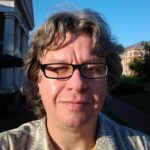
Dr. Stuart Smith is a Professor of Mechanical Engineering in the Center for Precision Metrology at UNC Charlotte and was cofounder of North Carolina companies Albany Instruments Inc., 2000, Motus Mechanical Inc., 2014, and was involved in the origination of InsituTec Inc. in 2002. These research and manufacturing companies specialize in eddy current sensing technologies, mechanism construction kits and fine motion control metrology systems respectively. He started his career in 1977 when he took up a factory maintenance apprenticeship with Miles Redfern Ltd (UK), a manufacturing industry producing rubber and plastic components for the auto industry. After completing his Ph.D. degree at the University of Warwick he continued working as a faculty member at this institute for 6 years. In 1991 he was awarded an engineering secondment by the Royal Academy of Engineering and subsequently spent a year on sabbatical leave working at the Center for Precision Metrology at the University of North Carolina at Charlotte. In 1992, he returned to Charlotte to take up a permanent position.
Throughout his research career his main focus has been the development of instrumentation and sensor technologies, including advanced signal processing techniques, for measurement of surface profile, micro-geometry and displacements, primarily aimed towards the challenges of atomic scale discrimination and modifications. Development of these systems has required the innovation of many high bandwidth, precision positioning and translation systems. This work has resulted in 18 patents, over 90 journal publications, 90 conference proceedings and the authorship of two books (Flexures: Elements of elastic mechanism design and Foundations of UltraPrecision Mechanism Design) the first of which remains in print after 20 years. Current interests include the integration of multi-sensing methods into precision electromechanical systems for nanometer and micrometer level assembly, x-ray interferometry and micro CT metrology, dimensional metrology, and the creation of new instrumentation capabilities.
Thomas A. Dow
2015 Lifetime Achievement Award
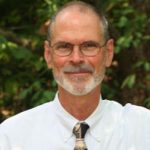
The ASPE Lifetime Achievement Award is presented to individuals who have made significant contributions to the field of Precision Engineering. Dr. Thomas A. Dow is regarded worldwide as a founding father, a leading spokesperson and a top expert in the field of precision engineering.
After receiving his PhD degree from Northwestern University in 1972, Dr. Dow joined the Tribology Section of Battelle Columbus Laboratories and worked there for ten years. His seminal publications and ASME-published text on the mechanics of lubrication and wear in sliding contacts lead to the ASME Lubrication Division Newkirk Award in 1976 for contributions to metrology. These activities were his entry points into what was then the brand new field of precision engineering.
Dr. Dow joined the faculty at North Carolina State University in 1982 and established the first national academic research center, Precision Engineering Center, dedicated to precision engineering research and education. Dr. Dow’s most notable early work was the development and demonstration of the fast-tool servo for machining non-rotationally symmetric optical surfaces. He was one of the first to integrate this concept into a diamond turning machine and the technique has since become indispensable in many ultraprecision applications. His work on servomechanisms and force transduction in diamond machining laid the foundation for his subsequent analytical, numerical, and experimental research on mechanisms of material removal at nanometer length scales. He is well known for developing models and measurement methods that relate achievable surface finish to diamond tool sharpness and nanoscale cutting forces. He developed a theory for ductile response in nominally brittle materials that led to a counterintuitive but now widely accepted model for ductile regime grinding. His landmark paper on that topic has been cited more than 500 times by others in the field. More recently he also developed models and experimental methods to study other new technologies such as vibration assisted machining and nanocoining.
Professor Dow’s sustained commitment to precision engineering education has had a remarkable impact on the field. His inspiring pedagogy and rigorous educational approach has helped to launch the careers of dozens of aspiring precision engineers. He has always engaged all of his students in “active learning,” well before that practice was popularized in engineering curricula. His students take field trips to organizations to see first-hand the challenges and opportunities associated with careers in precision engineering. His advisees generally feel more like apprentices than students. He works side by side with them in the lab, sharing insight and guiding progress. His broad practical mechanical engineering experience serves both as a model and as a resource.
Dr. Dow was one of the founders of the American Society for Precision Engineering and has acted as the Executive Director for the past 30 years.
Steven R. Patterson
2014 Lifetime Achievement Award
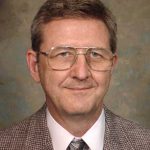
Dr. Steven R. Patterson, University of North Carolina – Charlotte, was awarded the Lifetime Achievement honor for 2014. Steve Patterson received his B.S. degree (with honors) in physics from the California Institute of Technology, M.S. and Ph.D. in applied science from the University of California at Davis and M.A. (with honors) in biblical studies from Dallas Theological Seminary. A charter member of ASPE, he has served on its Board of Directors including as president in 2006. He served for more than a decade as an associate editor for Precision Engineering, the journal of the ASPE.
Steve began his involvement with precision engineering in 1970 at the Air Force Weapons Laboratory where he worked with early applications of diamond turning in high-power laser systems, eventually serving there as the Chief of the Optical Physics group. He subsequently joined the Lawrence Livermore National Laboratory as part of the team that designed and built the Large Optics Diamond Turning Machine. At the Lawrence Livermore National Laboratory he worked in the areas of fabrication technology and precision interferometry, leading the Materials Fabrication Division there and briefly serving as the initial national program manager for the National Ignition Facility during its conceptual phase. In 1993 he joined the University of North Carolina at Charlotte as the SPX Distinguished Professor of Engineering. For five years beginning in 2003 he returned to the Lawrence Livermore National Laboratory to serve as Associate Director of Engineering before resuming his position at the University.
Steve’s technical interests include precision machine design, diamond-turning, machine control and ultra-precision dimensional measurement. He has studied the thermal and long-term temporal stability of a variety of materials used in precision engineering applications. His interests also include engineering education and in particular the training of the next generation of precision engineers.
Steve is a fellow of the SPIE, and has served as a member standards committees for both ASME and IFAC. He is the author or co-author of over fifty papers in the field of optics and precision engineering and a listed inventor on eight patents.
W. Tyler Estler
2013 Lifetime Achievement Award
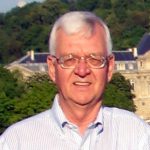
Tyler Estler is a Charter Member of ASPE, serving as President during 2010. He served two three-year terms on the Board of Directors and is a past Chairman of the Nominating Committee. He has co-taught ASPE tutorials on Self-Calibration/Reversal Techniques and the Fundamentals of Measurement Uncertainty on numerous occasions. He served for thirteen years as Editor-in-Chief of the Society’s journal, Precision Engineering, for which he received the ASPE Distinguished Service Award.
Tyler received his B.S. degree, Summa Cum Laude, in Physics from Florida Atlantic University in 1966 and his Ph.D. in Physics from the State University of New York at Stony Brook in 1972. He was Associate Professor of Physics at New College of the University of South Florida from 1972 to 1982 and joined the Precision Engineering Division of the National Bureau of Standards (now NIST) in 1982.
Tyler’s technical interests include: high-accuracy dimensional metrology of precision machine tools, coordinate measuring machines, and complex workpieces; precision interferometric metrology for displacement, absolute distance, angle, and surface figure measurements; laser alignment metrology; large-scale metrology; refractive index measurements; probability theory and the fundamentals of measurement science and engineering metrology.
Tyler received U.S. Department of Commerce Bronze and Silver Medals for contributions to high-accuracy dimensional metrology, the NIST Allen V. Astin Measurement Science Award for contributions to angle metrology, and the NIST Judson C. French Award for significant improvements in the accuracy of calibration of long standards of length. He received the 2011 SME Albert M. Sargent Progress Award for seminal contributions to advanced manufacturing metrology.
Tyler is a member of the American Association of Physics Teachers and is a Fellow of CIRP, the International Academy for Production Engineering, where served on the Editorial Committee and as Chairman of Standing Technical Committee P on Precision Engineering and Metrology. Tyler also served as a member of the BIPM Director’s Advisory Group on Measurement Uncertainty.
Sir David McMurtry
2012 Lifetime Achievement Award

As inventor of the touch trigger probe and co-founder of Renishaw plc, Sir David McMurtry’s contributions to the field of precision metrology and manufacturing are numerous and global in nature. Sir David’s electronic touch trigger probe transformed the field of contact metrology producing dramatic improvements in measurement precision and accuracy. His technical and entrepreneurial leadership at Renishaw has spanned almost four decades, resulted in over 150 Renishaw patents, and provided manufacturers across multiple industries the tools necessary to measure and produce products traceable to international standards.
Sir David McMurtry, CBE, RDI, FRS, FREng, CEng, FIMechE, is Chairman and Chief Executive of Renishaw plc. with responsibility for group technology. Renishaw was founded in 1973 by Sir David and John Deer (now Deputy Chairman of Renishaw plc), a colleague from Rolls-Royce, to carry on the business of producing and selling the touch-trigger probe he invented and designed in the early 1970s, while employed by the Rolls-Royce group at its Aero-engine Division at Filton, Bristol.
Sir David was awarded Royal Designer for Industry (RDI) and was made a Commander of the Order of the British Empire (CBE) “for services to Science and Technology.” Sir David is a visiting Professor of the University of Huddersfield and was awarded an honorary Doctorate of Engineering from the University of Birmingham. He has also been awarded honorary degrees of Doctor of Engineering from Heriot-Watt University, University of Bristol and the University of Bath. Sir David is a Fellow of the Society of Manufacturing Engineers (USA), a Fellow of the Institution of Mechanical Engineers, a Fellow of the Royal Academy of Engineering (FREng) and a Fellow of the Royal Society. He has received many awards including the 7th ND Marketing Award in Japan; the Champions of Metrology Award from the Metrology for World Class Manufacturing; the Duncan Davies Memorial Medal by the Research and Development Society; Master Entrepreneur, South Region in the Ernst & Young LLP “Entrepreneur of the Year” award; Lifetime Achievement Award at the annual West of England Business Awards; Master of Manufacturing from the official magazine of the Society of Manufacturing Engineers; the General Pierre Nicolau Award from the International Academy for Production Engineering and the Swan Medal of The Institute of Physics.
Graham J. Siddall
2011 Lifetime Achievement Award

Graham Siddall received his BS degree in Production Engineering and Management with First Class honors from the University of Nottingham in England. He received his M.Sc. and Ph.D. degrees in Natural Philosophy (Physics) in 1971 and 1975, respectively, working under the guidance of Professor R.V.Jones at the University of Aberdeen in Scotland.
After working in surface metrology at Rank Taylor Hobson in Leicester, England, Dr. Siddall was awarded a Lindemann Research Fellowship to the United States where he joined the team at Stanford University working on the NASA/Stanford Gyro Relativity Experiment. His work at Stanford focused on developing the metrology techniques and equipment needed to manufacture the very precise spherical quartz rotors used in the cryogenic gyroscopes for the GP-B space mission. Following this, Dr. Siddall joined Hewlett-Packard Labs in Palo Alto, working in the X-ray and E-beam Lithography group, primarily in the area of precision stage design. He went on to become the Vice President of research, development and engineering at GCA Corporation which marked the beginning of a long and distinguished stint in semiconductor capital equipment. Following GCA, in 1988 Dr. Siddall joined Tencor Instruments in California as Vice President of Technical Marketing and later became its first Chief Operating Officer. Over the next ten years the Company grew tenfold and merged with KLA in 1997, to form KLA-Tencor Corporation, where Dr. Siddall led the multi-billion dollar Wafer Inspection Group as Executive Vice President. In July 1999, he left KLA to join Credence Systems, a semiconductor test equipment company, as its President and Chief Executive Officer and then later, as Chairman of the Board, before retiring in October 2005.
Today, Dr. Siddall resides in Monterey, California, and is actively involved with several private companies. He serves as Chairman of the Board of DCG Systems, Inc., a provider of leading edge design diagnostics and failure analysis technologies to the semiconductor industry, with recent acquisitions in the areas of nano-positioning and thermal imaging. He is also a Director of ReVera Inc., a leading producer of next generation metrology equipment for monitoring the composition and thickness of critical layers deployed in semiconductor manufacturing processes. He is also Chairman of the Board of Nuforce, Inc, a fast-growing consumer electronics company and a Member of the Advisory Board at Dali Wireless (Beijing) Co. , Ltd.
Graham is a past President of the American Society for Precision Engineering.
Christopher J. Evans
2010 Lifetime Achievement Award
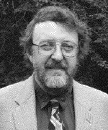
Dr. Christopher J. Evans received his B.Sc. (with honors) in Chemical Engineering from the University of Manchester Institute of Science and Technology in 1975. He received in M.Sc. in Precision Engineering from the Cranfield Institute of Technology in 1987. He received his Ph.D. in Mechanical Engineering from the University of Birmingham in 1996.
Dr. Evans recently accepted a position as professor in the Department of Mechanical Engineering and Engineering Science at the University of North Carolina at Charlotte. Prior to this appointment and since 2001, he served as Senior Research Scientist and Chief Metrologist at the Zygo Corporation. From 1990 to 2001, he held various positions in manufacturing research at the National Institute of Standards and Technology (NIST), including Program Manager for the Advanced Optics Metrology Program. From 1984 to 1990, he was a University of Wisconsin-Madison Research Associate based at NIST. From 1975 to 1984, he was employed by IPC Science and Technology Press (later Butterworth Scientific), where he was the founding Editor of the journal Precision Engineering.
Dr. Evans’ research career has included numerous activities that have explored the natural synergy between advanced metrology and advanced manufacturing processes. He has also focused on working with multi-disciplinary teams to address complex problems. Examples include: 1) design and construction of the new hermetic encasements for the Declaration of Independence, Constitution, and Bill of Rights; 2) diamond turning, where the focus on the tribo-chemical mechanisms which govern the process ultimately led to the ability to predict diamond wear based on electronic structure; 3) hard turning, including fundamental understanding of chip segmentation dynamics, white layer formation, and achievable surface quality; 4) mechanisms in polishing, including development of the rapidly renewable lap concept; and 5) self-calibration techniques for interferometry systems.
Dr. Evans is the author the book “Precision Engineering: an Evolutionary View” (with Japanese and Chinese editions), five book chapters, and over 40 refereed publications. He is also the holder of 11 U.S. patents. His honors include:
• Distinguished Service Award, American Society for Precision Engineering, 1991
• R&D-100 Award: 100 Most Technologically Significant Inventions, 1992
• Editor-in-Chief, Precision Engineering, 1991 to 1994
• U.S. Department of Commerce Gold Medal (2001) and Bronze Medals (1992 and 1999) for Superior Federal Service
• Three Best Paper Awards
• Zygo Corporation Innovation Award, 2009
Dr. Evans is a Fellow of the International Academy for Production Research (CIRP) and a Charter Member of ASPE; he also maintains memberships in the Optical Society of America, Society for Photo-Optical Instrumentation Engineers, and the European Society for Precision Engineering and Nanotechnology.
Robert E. Parks
2009 Lifetime Achievement Award

Mr. Parks received a BA and MA in physics from Ohio Wesleyan University and Williams College, respectively. He started his career in 1967 at the Hawkeye Plant at Eastman Kodak Company as an optical engineer and after two years went to work at Itek Corp. where he was an optical test engineer One of his jobs was to align and test the 6 matched cameras for the S-190 Space Lab project.
From there he went to work for Frank Cooke, Inc. for four years where he got his hands dirty learning how to make optics. This gave him the background to become manager of the optics shop at the College of Optical Sciences at the Univ. of Arizona in 1976. He was at Optical Sciences for 12 years and it gave him the opportunity to write about the projects in the shop and the optical fabrication and testing techniques used there including absolute testing and the installation of a 5 m swing precision optical generator.
Mr. Parks left the University in 1989 to start consulting business specializing in optical fabrication and testing. Among his jobs was working for the Allen Board of Investigation for the Hubble Telescope and he stayed in residence at HDOS for the duration of the investigation. In 1992 he formed Optical Perspectives Group, LLC as a partnership with Bill Kuhn, then a PhD student at Optical Sciences.
While still at Optical Sciences, Bob became involved in standards work and for twenty years was one of the US representatives to the ISO Technical Committee 172 on Optics and Optical Instruments. For two years he was the Chairman of the ISO Subcommittee 1 for Fundamental Optical standards. For the last two years Bob is back part time at Optical Sciences helping support optics projects and teaching as part of the Opto-Mechanics program.
Bob is a member of the Optical Society of America, a Fellow and past Board member of SPIE and a member and past President of ASPE. He is author or co-author of over 100 papers and articles about optical fabrication and testing, and co-inventor on 6 US patents.niques used there including absolute testing and the installation of a 5 m swing precision optical generator.
Toshimichi Moriwaki
2008 Lifetime Achievement Award

Toshimichi Moriwaki has been selected for the 2008 ASPE Lifetime Achievement Award. This selection is based on his significant published research, which has led to a better understanding of materials, facilities, principles, operations, and their application to improve manufacturing processes. Dr. Moriwaki is widely regarded as one of the leading researchers in the international manufacturing community, where he has addressed audiences in Japan, the US, Germany, Australia, Canada, Singapore, among other countries.
Some of his most significant research includes such manufacturing processes as ultraprecision machining and machine tools and sensor technology and he has been credited with being among the first in the world to perform ultraprecision machining with diamond cutting tools. His research work has covered a wide range of topics from intelligent production system, dynamic stiffness and thermal deformation analysis of machine tools and studies of the cutting process. He has been active in JSPE and CIRP as well as ASPE.
A prolific scholar, Moriwaki is the author or coauthor of hundreds of papers and presentations. A committed educator and academic administrator, Dr. Moriwaki was on the faculty of Japan’s prestigious Kobe University for 33 years beginning in 1974. In 2007, he moved to Setsunan University, and is currently a Dean and Professor of Department of Industrial and Management Systems Engineering. He also works on the development of the local economy and industry as the chief director of the Kobe City Industrial Promotion Foundation., and co-inventor on 6 US patents.
His research work has covered a wide range of topics from intelligent production system, dynamic stiffness and thermal deformation analysis of machine tools and studies of the cutting process. He has been active in JSPE and CIRP as well as ASPE.
E. Clayton Teague
2007 Lifetime Achievement Award
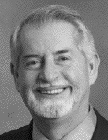
Clayton earned B.S. and M.S. degrees in physics from the Georgia Institute of Technology and a PhD, also in physics, from the University of North Texas. His doctoral work was completed at the National Bureau of Standards (now the National Institute of Standards and Technology), which Clayton joined in 1972. Clayton’s PhD thesis on metal-vacuum-metal electron tunneling was ground-breaking work, demonstrating for the first time several basic phenomena that underlie the present widespread use of scanning tunneling microscopes. His thesis provided some important physical concepts that lead to the realization of atomic resolution via the Scanning Tunneling Microscope for which G. Binnigand H. Rohrer received the 1986 Nobel Prize.
At NBS/NIST, Clayton made major contributions to surface microtopography measurement, including the development of a new series of sinusoidal profile roughness artifacts, available today as NIST Standard Reference Materials. He also developed new experimental and theoretical techniques for the measurement of surface roughness using light scattering. Clayton’s long interest in, and deep understanding of, the fundamental concepts that underlie the design of precision instruments culminated in the building of the NIST Molecular Measuring Machine. This machine has demonstrated the ability to image atoms and to reposition and measure coordinate positions to nanometer-scale uncertainties over areas of square centimeters – a combination of capabilities achieved by few other instruments in the world.
During his years at NBS/NIST, Clayton assumed positions of increasing technical leadership and responsibility, serving as Group Leader in Nanoscale Metrology and subsequently as Chief of the Manufacturing Metrology Division in the Manufacturing Engineering Laboratory. His technical efforts in nanoscale science and technology, precision engineering and surface metrology have resulted in more than 70 authored or co-authored papers, over 75 invited talks, and 12 keynote lectures.
In 2003, Clayton Teague was appointed as the Director of the National Nanotechnology Coordination Office (NNCO). The NNCO provides technical and administrative support to the Nanoscale Science Engineering and Technology Subcommittee and serves as the point of contact on Federal nanotechnology activities for regional, state and local nanotechnology initiatives, government organizations, academia, industry, professional societies and others.
Clayton Teague is a Charter Member of ASPE and played a leading role in the founding of the Society in 1985. He served as first Chairman of the Board of Directors and later served a term as President. He was instrumental in the development of ASPE’s Annual Meeting tutorial series and for many years taught a highly-successful, very well attended tutorial on the basic concepts of precision instrument design. For ten years Clayton was Editor-in-Chief of the international journal Nanotechnology. For this service, and for his technical contributions to the field of nanotechnology, he was elected a Fellow of the UK Institute of Physics. Among his many awards are US Department of Commerce Gold and Silver Medals and the DOC/NIST Allen V. Astin Measurement Science Award. In addition, Clayton received the Kilby International Award from the Kilby Awards Foundation, and an IR-100 Industrial Research and Development Award.
David H. Youden
2006 Lifetime Achievement Award

David Youden was born on August 19, 1939 in Westerly, Rhode Island. He spent his early years disassembling a great many clocks and radios. He majored in electrical engineering at Worcester Polytechnic Institute from 1957 through 1959 and received a degree in mechanical engineering from Central New England College in 1967. After graduation he began work on an MBA at Clark University but the demands of a growing family ended those aspirations in 1970.
Dave’s professional career began in 1959 when he accepted employment with the Heald Machine Company, a subsidiary of The Cincinnati Milling Machine Company. He started work as a draftsman, but quickly advanced to the position of R&D engineer where he worked under the tutelage of Doctor Robert Hahn, who introduced him to the study of hydrostatic bearings.
From 1969 through 1972, while working at Heald, Dave taught Instrumentation and Solid State Electronics at Quinsigamond Community College in Worcester, Massachusetts.
In 1972, during a downturn in the machine tool industry, Dave went to work for Ocean Systems, Inc. of Reston, Virginia. Ocean Systems was a start-up company in the off-shore oil industry. While there he designed and helped install large traction winches capable of one million pounds of force. These winches were used to moor tankers to buoys in the North Sea.
In 1973 the machine tool industry reclaimed Dave when he accepted employment at the Cone Blanchard Machine Company in Windsor, Vermont. Beginning as a Research Engineer, Dave advanced through a number of positions in engineering management, eventually becoming Director of Engineering. In the early ‘80s Dave met Frank Cooke, who described methods of using Blanchard grinders to produce spherical optics. It was at this point that Dave became a precision engineer.
When Cone Blanchard failed in 1984 Dave went to work for Don Brehm at Pnemo Precision in Keene, NH. Shortly after joining Pneumo, he met Jim Bryan and formed a lasting friendship. Between 1984 and 1994 Dave was responsible for the design of a number of notable diamond turning and flycutting machines including the ASG 2500, The Planoform 1000, and the Nanoform 600. During that period Pneumo Precision became Rank Pneumo, and then Taylor Hobson Pneumo. In 1994 Dave relocated to Raleigh, NC where he assumed the title of Director of Advanced Technology for Pneumo, and simultaneously became an Adjunct Professor in the Mechanical and Aerospace Engineering Department at NCSU.
In 1997 Dave changed jobs again, becoming an Applied Research Engineer with the Eastman Kodak Company. Continuing to operate from an office at NCSU, Dave developed a number of precision machines, including a small coordinate measuring machine that is currently at UNC Charlotte. In 2005 Dave retired from Kodak to turn his attention to more personal matters including an interest in seismology.
This respite from the commercial world did not last for long, as there was pressure on Dave to resume his career. In response, he accepted a position as Senior Engineer with Olympic Precision, Inc. of Windsor, VT. Dave, at this time, continues to design ultra-precise machine tools and metrology equipment. He also plans to pass on some of his knowledge by mentoring young engineers and teaching a series of short courses in precision engineering.
P. Donald Brehm
2005 Lifetime Achievement Award

Don Brehm is well known for his role in the commercialization of precision engineering equipment and diamond turning machines in particular. Throughout his career, he has been instrumental in the conversion of leading-edge precision technologies to widely available commercial metrology and fabrication equipment.
Don received the BSME degree from Rensselaer Polytechnic Institute in 1957. He joined Pratt & Whitney Aircraft as a test engineer. He later moved to the MPB Corporation (now part of Timken) where he worked as a quality control and R&D engineer. His ideas about making more robust air bearings led him to found Pneumo Precision in 1962. Pneumo developed the Pneumo-Centric line of air bearing metrology products and the first commercial air bearing diamond turning machining equipment including the MSG-325 CNC diamond turning machine for aspheric optics turning. Don participated in early efforts to promote and commercialize the diamond turning process for optics.
In the late 80’s Don founded Precitech with the goal of developing and marketing lower cost, high performance CNC diamond turning machines to broaden the customer base. Precitech successfully pioneered the use of PC controls, linear scales, linear motors, and on-machine metrology in commercial diamond turning machines.
More recently, Don co-founded Accura Technics in 2001. Accura develops and manufactures hydrostatic spindles, CNC grinding systems and innovative multitasking systems for the ultra precision production of mechanical and optical components.
Over the span of his career, Don’s innovation and entrepreneurship have had a significant impact on his local community, on the wider precision engineering community, and on the careers of many precision engineers and craftsmen. Don currently works at Accura Technics in Keene, NH and lives in Spofford, NH with his wife Jill.
Ted J. Arneson
2004 Lifetime Achievement Award

Ted is best known as the founder of Professional Instruments Company and as a pioneer in the development of air bearing spindles. Besides his support of ASPE, Ted has also found time for leadership roles in many volunteer activities, concentrating in the areas of mental health, workplace safety, and watching out for the interests of small manufacturers.
Both sides of Ted’s family contained inventive, intuitive individuals with gifts for music, mathematics, and mechanics. His boyhood home was a place where knowledge was valued, points were argued, and books and tools were ever-present. At age 12, his innate mechanical skills led him to open a bicycle shop in his parents’ basement. Later he was heavily involved in the family business of building vision-training instruments invented by his father.
Ted worked for General Mills in 1942 and 1943; this major precision-manufacturing plant produced analog-computer torpedo directors, three-dimensional cams, precision gears, and 8” gun sights. He was mentored by several brilliant engineering and manufacturing people, and was given wide exposure to ultra-precision manufacturing processes at a very high level.
After the war, Ted and his brother Harold started a small shop, adopting the “Professional Instruments Company” name. When the Korean War put the economy on a war footing, Ted and Harold decided to subcontract for the defense industries. They bought used machinery, fixed it up, and started to make rather difficult precision parts. They were good enough at it to attract the attention of some executives at Honeywell, who admired them for their pluck and their ability to get really excellent work out of miscellaneous machinery.
Ted and Harold worked 70 hours a week and came up with one fantastic development after another for projects varying from bag-making machines, to magnetic printing of checks, to spherical electrostatic gyroscopes, to 17-inch spherical air bearings for Apollo program space simulators.
The P. I. crew was built from scratch, using a training program devised by Ted, featuring on-the-job mentoring, class work, and after-hours self-education.
Ted created the culture of hands-on precision and attention to detail that enabled the success of air bearing work at P.I. by creating world-class experts in the fields of metallurgy, dimensional stability, bolted interfaces, metrology and quality control.
Ted’s vision, guidance, and support enabled advances in navigational devices, ultra-precision grinding, microlithography, diamond-turned optics, computer memory disks, spindle metrology, and measurement of the gravitational constant.
John H. Bruning
2004 Lifetime Achievement Award

The 2004 ASPE Lifetime Achievement Award is presented to Dr. John H. Bruning in recognition of his many contributions to the art and science of precision engineering. John Bruning has been involved in advancing the state-of the-art of photolithography and has contributed significantly to many of the key events in the history of this key technology.
John Bruning received a bachelor’s degree from Penn State University and a master’s and doctorate from the University of Illinois, all in electrical engineering. His doctoral work, completed in 1969 dealt with multiple scattering of electromagnetic and acoustic waves by spheres. Upon graduation, John started at Bell Laboratories in Murray Hill as a member of the technical staff in the optical group. Early work involved the development of high accuracy interferometry for testing precision optical surfaces and lenses. Out of this work came a fundamentally new approach to interferometry known as phase measuring interferometry (PMI), which is the basis of most modern digital interferometers. This development has enabled 10-100 times greater accuracy in manufactured lens components for optical lithography and other precision optics applications.
From 1973-1979 he supervised several groups involved in developing mask inspection systems for photolithography and the exploration of new packaging techniques for integrated circuits and reliability testing methods for these new packaging systems. From 1979 to 1984, he directed several activities within the New Lithographic Systems Group including the mechanical design of EBES-IV, an advanced e-beam mask pattern generator. He initiated and managed the Bell Labs Deep-UV Photolithography Program working with Tropel as optics supplier and authored the fundamental patent for line-narrowed excimer laser photolithography. During this period, he was also involved in optical thin-film filter design, design of uniformers and diffusers, alignment systems and optical design.
In 1984, Bruning left Bell Laboratories to become vice president and general manager of Tropel, a division of GCA Corporation. In 1986, he assumed the additional responsibilities as executive vice president and chief technical officer of GCA. In 1994, Bruning led a management buyout of Tropel. Tropel was acquired by Corning Inc. in March 2001. John is currently the President and CEO of Corning Tropel where he remains involved in developing technical strategy.
John has published extensively and holds 12 patents. He is a recipient of the Distinguished Alumnus Awards from both his alma maters. He is a Fellow of the IEEE and the OSA and in 1993 received the OSA Richardson Medal. In 1996 he received the SEMI Award for developments in Deep-UV photolithography and was elected to the National Academy of Engineering in 1998. John has served President of the Society and was responsible for starting the business forum at the Annual conference. He has served as an editor for the Precision Pointers section of the Journal of the Society and is also a recipient of the Society’s Distinguished Service Award. John continues to be a strong supporter of the Society and is currently a Sustaining Member.
Gary Sommargren
2003 Lifetime Achievement Award
Dr. Sommargren’s accomplishments include a heterodyne profiler for measuring surface micro-roughness, displacement measuring interferometry used for precision stage positioning, and a point diffraction interferometer for the evaluation of surface figure for extreme ultra-violet optical elements. In all instances, Dr. Sommargren has pursued Angstrom-level measurements through the careful application of scientific and precision engineering principles. Dr. Sommargren has been a quiet but outstanding contributor to precision optical metrology throughout his career.
Horst Kunzmann
2002 Lifetime Achievement Award

Horst Kunzmann has made major contributions to the discipline of precision engineering both inside his own country and internationally. He joined the Physikalisch-Technische Bundesanstalt in 1966 in the “Line Scale Metrology” section and has never lost his love for ultra-precision measurement and the practical realization of the meter which is central to precision engineering.
While at PTB he earned his Dr.-Ing. Degree from the Technical University of Hanover in 1971. His promotions within this outstanding national laboratory were impressive. He became Head of Division in 1985 and created “Precision Engineering” at PTB leading three departments, Micrometrology, Dimensional Metrology, and Measuring Instruments Technology. In the early ‘90s he spearheaded the efforts to integrate the then “East German” precision engineering efforts into a national whole, an effort that was successful due to his personal and managerial skills. He is now a member of the Presidential Board of PTB and the head of PTB metrology activities for industry, the German Calibration Service and the Competence Center for Ultra-precise Surface Figure Measurement. As a leader and manager he is exemplary, but his contributions in the laboratory were also impressive. He led the international efforts to use lasers for metrology including straightness. Against serious opposition from those preferring the older light sources, he successfully developed and championed the use of frequency stabilized gas lasers as the practical length standard, an achievement which has dramatically altered metrology in our times. He also rebuilt the PTB program in Industrial Metrology bringing it into worldwide prominence introducing diamond turning and “factory floor” metrology.
He has more than 80 publications in our discipline in subjects ranging from laser applications to coordinate metrology. He also has 10 patents in the area of precision engineering. He is a great engineer with dedication, curiosity, kindness, insight, courage, and engineering know-how, an example to us all and an extremely deserving recipient of the ASPE Lifetime Achievement Award.
David J. Whitehouse
2002 Lifetime Achievement Award

Dr. David Whitehouse has had a long and distinguished career as a designer of dimensional metrology instruments and the inventor of algorithms for processing data from these instruments. He holds 22 patents. He has written more than 200 technical papers and 5 books including the 1,000 page “Handbook of Surface Metrology” which is widely regarded as a classic in the field. His new book, “Handbook of Surface and Nanotechnology” (1100 pages) will be published in 2003.
Dave is often referred to as the “Father of Digital Metrology.”
1) He was the first to rigorously define the mean line in the M-System of surface measurement and predict the output of a 2RC analog filter for any surface.
2) He was the first to implement a phase corrected filter.
3) He was the first to digitize and process surface metrology data to automatically evaluate the various surface parameters.
4) He was the first to digitize and process roundness metrology data to automatically determine the minimum radial zone (MRZ) center as well as the centers of partial arc measurements used in the ball bearing industry.
These algorithms are now provided as standard in all roundness and surface finish instruments produced throughout the world.
Dave’s present interest is the rationalization of surface parameters in accordance with the systems approach using what he calls a “function map”.
Dr. Whitehouse is a charter member of ASPE. He is an Active Member of CIRP, and a past President of the Committee for Surface Roughness. He is a Fellow Member of the U.K. Institute of Physics, the Institute of Measurement and Control, the Institution of Production Engineers, and the Institution of Electrical Engineers. He is an Honorary Member of The Japanese Institution of Precision Engineers and a Senior Member of the Chinese Society of Mechanical Engineers. He has received many honors throughout the world including the commemorative medallion of the Mendeleeve Institute of Metrology, Lenningrad, USSR.
Dr. Whitehouse is presently an Emeritus Professor of Engineering Science at the University of Warwick, a Guest Professor at the University of Tianjin in P.R. China, and Consultant Professor at the University of Harbin, P.R. China. He was previously a Professor and the Chief Scientist of the Dept. of Engineering at Warwick. He had a long career at Rank Taylor Hobson in Leicester. He started as a research engineer in 1961 as the protégé of Bill Reason, and completed his career in 1978 as Chief Research Engineer. He holds a Ph.D. as well as a D.Sc. from the University of Warwick.
E. Ray McClure
2001 Lifetime Achievement Award
Dr. McClure has been recognized for his efforts to define the field of precision engineering, his leadership in the creation of the ASPE and his technical contributions in the area of thermal effects on manufacturing accuracy. Ray has been a passionate spokesman for precision engineering and his technical and organizational skills have had a profound impact on the field and those involved in it.
Ray was born on December 31, 1933, in North Dakota. He moved around because he was an Air Force brat. He finished high school in Spokane, Washington, in 1951 and entered Washington State College with the intent of getting an Air Force commission via the ROTC. After failing the eye exam, he had to lower his sights to only a BSME degree in 1955. Ray was employed at Boeing in Flight Test until he received a fellowship to Ohio State University in 1957. While at OSU, Columbus, he worked at North American Aviation (now Rockwell/Boeing) and Battelle Institute.
Before graduating with a MSME, he was appointed to the faculty of Mechanical Engineering at Oregon State University. While an Assistant Professor at Oregon State University, took a summer job at the Lawrence Livermore National Laboratory and received a NSF grant that allowed him to pursue a doctorate at the University of California, Berkeley, finishing in 1969. . His doctoral dissertation was entitled “Manufacturing Accuracy Through Control of Thermal Effects.” Over 500 copies of this thesis has been distributed worldwide and has served as a reference for several standards pertaining to machine tool performance testing and metrology environments, especially the ASME B89.6.2. Before graduation from UCB, he joined the Mechanical Engineering Department at LLNL in the Metrology Group, headed by Jim Bryan. Over the next twenty-five years, he had several positions within LLNL, including Deputy Head of the Mechanical Engineering Department, Division Leader of the Energy Systems Division and Program Leader of the Precision Engineering Program. He retired from LLNL in 1988 and joined the Moore Special Tool Company as Vice President for Engineering and Technical Director. He retired from Moore in 1996.
Measurement, testing and design have always been key elements of his work. While a consultant to the Bureau of Mines in 1963, he developed a fringe counting laser interferometer dilatometer to make the first measurements of thermal expansion of Columbium (now Niobium) at 1500 degrees Celsius. The actual “fringe counting” was done by a graduate student, who counted the wiggles of a line on a strip chart recording. The original light source for this instrument was an “ozone” lamp from a clothes dryer. This was replaced with a prototype HeNe 130 mm laser from Spectra Physics, which at that time had only three employees working in a rented garage.
He met his wife, Amelia, at Boeing and was married in 1956. Amelia passed away after a fight with cancer on September 1, 2001. They have two sons, Michael and Steven.
Robert Hocken
2000 Lifetime Achievement Award
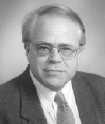
Professor Robert J. Hocken is recognized for his contributions to the art and science of precision engineering, and to the education and training of a new generation of precision engineers and metrologists.
Bob Hocken earned B. A. degrees in both physics and mathematics from Oregon State University and M. A. and Ph. D. degrees in physics from the State University of New York at Stony Brook. His doctoral work, completed in 1973, included an early application of heterodyne laser interferometry in precision metrology – in particular to the measurement of the refractive index of xenon near its liquid-gas phase transition. During 1974-75, Bob continued his work in experimental critical point thermodynamics as an NBS-NRC Postdoctoral Fellow in the Heat Division of the National Bureau of Standards (since 1988, the National Institute of Standards and Technology – NIST). In 1975 he joined the permanent staff of NBS as a physicist in the Dimensional Technology Section. Over the next dozen years or so, Bob assumed positions of increasing technical leadership and responsibility, becoming a Group Leader in Dimensional Metrology, Chief of the Automated Production Technology Division, and finally Chief of the Precision Engineering Division.
During his years at NIST, Bob earned an international reputation for technical excellence through his pioneering work in error modeling, error mapping, and software correction of coordinate measuring machines (CMMs) and machine tools, the large-scale metrology of liquid natural gas container ships, and the applications of stabilized lasers to problems of high-accuracy metrology. In the latter area, Bob lead the design and construction of a precise polarimeter for measurements of sugar concentration, an interferometer for measuring long-term dimensional stability of beryllium, and the original tracking interferometer system (now commercially available as the laser tracker).
In 1989 Bob left NIST and assumed the Norvin Kennedy Dickerson, Jr., Distinguished Professorship of Precision Engineering in the Department of Mechanical Engineering and Engineering Science at the University of North Carolina at Charlotte. He catalyzed the creation, and serves as Director, of the UNCC Center for Precision Metrology which is a widely recognized center of excellence for state-of-the-art graduate studies and research in areas of design, manufacturing, processes, and controls relating to precision metrology.
Bob Hocken is a Charter Member of ASPE, has served on numerous ASPE committees and has been twice elected to the Board of Directors. In addition he has served the Society for many years by teaching a very successful series of popular tutorials at our Annual Meetings. Bob is an Active Member of the International Institution for Production Engineering Research (CIRP), a member of the American Physical Society, a Senior Member and Fellow of the Society for Manufacturing Engineers, and a member of the American Society for Mechanical Engineers. Among his many honors and awards are Gold and Silver Medals from the U. S. Department of Commerce, the F. W. Taylor International Research Award from SME, and the F. W. Taylor Medal from CIRP. Most recently, Bob was awarded the First Citizens Bank Scholars Medal from UNCC, the University’s highest honor for scholarship and intellectual inquiry.
GEORGE TLUSTY
1999 Lifetime Achievement Award

Professor George Tlusty has had a long and distinguished career as a metrologist and designer of machine tools. Beginning in Czechoslovakia in 1941, Professor Tlusty was actively involved in research on machine tool metrology. In 1959 he wrote a paper on machine tool testing that included a powerful new method for testing the Axes of Rotation errors of milling machine spindles. It uses an accurate ball attached eccentrically to the spindle with two electronic pick-ups indicating the movement of the ball in two perpendicular directions with respect to the table. When these signals are displayed on the X and Y axes of an oscilloscope, a circular pattern is created. The non-roundness of this pattern is a measure of the spindle rotational accuracy at any spindle speed. We now refer to this procedure as the Tlusty Method.
Professor Tlusty is credited with much of the research on the causes of machine tool chatter. His publications on chatter date from 1954. He was one of the first to realize the critical relationship between dynamic stiffness and chatter. This work has been pivotal to the recent development in high-speed machining. He is considered one of the pioneers in this field.
Professor Tlusty was director of research at VUOSO in Prague in 1963. He was the founder of the Laboratory for Machine Tools and Robots at McMaster University in Canada, and is presently the Director of the Machine Tool Research Center at the University of Florida. He is a founding member of the North American Manufacturing Research Institute of SME. He became a member of CIRP in 1957 and served as its President in 1968. He is a Fellow Member of ASME, and SME. He is fluent in six languages. Many of his students are now as famous as George.
His book, Structures of Machine Tools, published in 1971, is widely regarded as a classic. His new book, Manufacturing Processes and Equipment, 1999, will undoubtedly become a classic.
In 1972, while at McMaster University, George acquired one of the new Hewlett-Packard laser interferometers and carried out innovative measurements on the accuracy of large numerically controlled machine tools. This work is very well documented in the Ph.D. Thesis of Dr. Gordon Mutch, “The Accuracy of Numerically Controlled Machine Tools,” published at McMaster in 1975.
At the age of 74, George started his own machine tool company, Manufacturing Laboratories, Inc. MLI has recently designed and built a large, hydrostatic bearing, super stiff, one of a kind, customer proprietary, turning machine with a positioning accuracy of a few microinches.
PATRICK A. McKEOWN
1998 Lifetime Achievement Award

Professor Patrick A. McKeown is recognized for his contributions to the development and promotion of the arts and sciences of precision engineering.
Following military service in the British Royal Engineers, Pat McKeown began his technical career as a student apprentice at the Bristol Aircraft Company, England. He studied aircraft design, production engineering and industrial administration at Cranfield before joining the Societe Genevoise d’Instrumente de Physique (SIP) in 1956. At SIP he worked on a variety of high precision measuring machines, including the photoelectric line standard comparator installed at B.I.P.M. in Sevres, France. In 1965, he was appointed Technical Director of Sip’s UK subsidiary, taking a responsibility for manufacture of jig borers and the design and build of other high precision specialty machines.
In 1968, Pat returned to Cranfield as Chief Engineer (later Director) of the Cranfield Unit for Precision Engineering (CUPE), which became self-supporting (based on industrial contracts) within three years. He was appointed to a personal chair at Cranfield, and in 1976, launched an academic department that paralleled the activities of the industrial unit. Under Pat’s leadership, CUPE expanded rapidly, developing both machine systems—such as the electronic gearbox and the CUPROC controllers—as well as a range of special-purpose high precision machine tools and measuring machines. Two subsidiary companies—Cranfield Moulded Structures (epoxy granite) and Cranfield Precision Systems (controls)—emerged before CUPE itself was transformed into Cranfield Precision Engineering, Ltd. in 1987.
Throughout his career, Pat has been a tireless promoter of precision engineering principles and practice, teaching and lecturing throughout the world. He played a major role in the launch of Precision Engineering, now ASPE’s journal, was instrumental in launching the International Precision Engineering Seminar Series in 1981, and is a Charter Member of ASPE. He is an active member of C.I.R.P. (The International Institution for Production Engineering Research), having served as its President in 1988, and is a Fellow of the UK Royal Academy of Engineering and a Charter Fellow of the Society of Manufacturing Engineers (SME). His many honors include SME’s Frederick W. Taylor Research Medal, the Order of the British Empire, and honorary doctorates from the Universities of Connecticut and Cranfield.
Since his (notional) retirement in 1995, Pat McKeown has continued to teach and to promote the arts and sciences of precision engineering. Most recently, his long campaign to launch a European Society for Precision Engineering and Nanotechnology has come to fruition, with its first conference in May 1999.
PAUL F. FORMAN
1997 Lifetime Achievement Award

Paul received his BS in Optics in 1956 from the University of Rochester. After a brief stint at Bausch & Lomb, he began his successful association with Perkin Elmer Company in 1957. He held various engineering, program and corporate management positions including Director of Optical Engineering.
He was program manager of the retroreflector array installed by Armstrong and the Apollo 11 team during the first moon landing. Paul served as CEO and Chairman of the Zygo Corporation from its inception in 1970 until 1993, and he is currently the Chairman of the Board.
Sol Laufer
1997 Lifetime Achievement Award
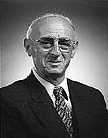
Sol has been intimately associated with high precision optics during his entire working career of approximately fifty years. Early in his career, he gained valuable experience working for 12 years with Professor E. Goldberg, once the Director of the Carl Zeiss Jena works. Sol joined the Perkin Elmer Company in 1966 where he designed special purpose equipment, tools and processes for the production of large precision optical elements requiring minimal operator skills and resulting in minimum waste.
At Zygo Corporation, he directed the development and implementation of fabricating processes and equipment for a large variety of precision optical components. As a result of his leadership, Zygo has gained international reputation as a for optical fabrication.
CARL A. ZANONI
1997 Lifetime Achievement Award

Carl received his M.A. and Ph.D. in Physics from Princeton and held a Post Doctoral Fellowship at Wesleyan University. He began his industrial career as a staff physicist at Perkin Elmer Corporation but left in 1970 to become a founding member of Zygo Corporation.
Carl’s experience has been in the design and development of electro-optical instrumentation and systems for 1) industrial laser metrology, 2) terrestrial and space born stellar and solar astronomy, 3) the generation of optical surfaces using ultra precise machine tools, and 4) automatic optical polishing processes. As Vice President of R&D, his responsibilities cover all of Zygo’s technical activities from design and development of surface and wavefront laser interferometer systems to the fabrication of one meter optics for laser fusion research.
Robert S. Hahn
1996 Lifetime Achievement Award
Dr. Hahn attended the University of Cincinnati under a fellowship provided by the Heald Machine Company of Worcester, Mass., and earned his doctorate in 1944. He then was made Director of Research at Heald’s newly established Research Department. Bob’s early technical papers, written during the 1950s, focused on grinding chatter and machine vibration and factors influencing the precision grinding process, including wheel-work conformity and thermal damage.
Bob must be considered one of the world’s foremost researchers, based on his uncanny ability to see a problem, analyze it theoretically, and then develop hardware to optimize the new understanding. Tuned dampers for boring bars, grinding spindles, as well as the Controlled-Force Machine for precision internal grinding, were among the inventions that resulted from his work. In the early 1970s, he foresaw the marriage of computers and machines and, almost single-handedly, developed a computer-controlled internal grinder using a Cincinnati Milacron computer and a 2CF Heald grinder. By 1973 a functioning machine was in Heald’s Product Development Department operation.
One measure of the success of an R&D director in a modern machine tool company might be the number of patents obtained. Bob was granted 23 patents during his Heald career. Just after World War II, he became one of the first members of the International Institution for Production Engineering Research (CIRP), an exclusive organization for research limited to 15 full members in any country. In 1980, Bob retired from Heald and established Hahn Engineering to investigate the computer/machine process, focusing on the influence of flexible internal grinding spindles on workpiece quality.
Bob is respected as a wonderful teacher, coach and colleague—as analytical as a professor but as practical as an inventor. At his 80th birthday on November 1, 1996, at Hahn Engineering, Bob was excited about his new piece of hardware, introduced only that year, that prevents spindle deflection from influencing the shape of internal grinding workpieces.
HAROLD E. G. ARNESON
1995 Lifetime Achievement Award

Harold was born in Minneapolis in 1925 and studied mechanical engineering at the University of Minnesota. He served in the Air Force during World War II and, with his brother Ted, started Professional Instruments Company in 1947. The company entered the ultraprecision engineering field in 1960 by fabricating hollow spherical gyro rotors requiring microinch tolerances.
Harold became convinced that hydrostatic air bearings were the optimum route to the accuracies necessary for future requirements in manufacturing and gauging. He invented the dualhemisphere spindle that became well known in applications at the Oak Ridge National Labs.
To overcome the disadvantages of the hemispherical configuration, Harold improved the design and patented the BLOCK-HEAD spindle in 1969. This spindle became the most widely used ultraprecision air bearing spindle in the world and is standard equipment on Moore diamond turning machines. The BLOCK-HEAD has seen application in a wide variety of fields from basic physics research in the value of the gravitational constant to the fabrication of interocular lenses for cataract surgery.
- 1995 Harold E. G. Arneson and Robert R. Donaldson
- 1994 Daniel B. De Bra
- 1993 Norio Taniguichi
- 1992 Calvin F. Quate
- 1991 James B. Bryan
- 1990 Reginald V. Jones
- 1989 Russell D. Young
- 1988 Milton C. Shaw
- 1987 Erwin G. Loewen
- 1986 Richard F. Moore

